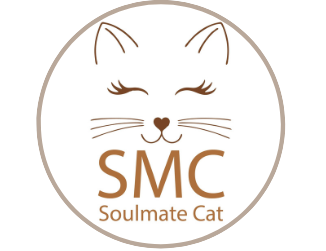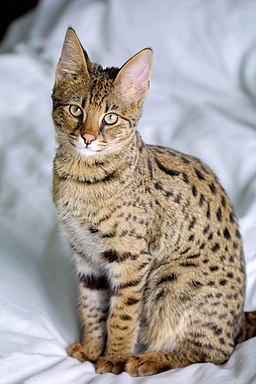The Savannah cat is a mix of the domestic cat and the serval cat. This cat breed is an African wild cat. As a breed, the Savannah is slightly smaller than the Serval wild cat. The aim of breeding is to complete this smaller variant of the Serval. At pedigree cat shows they often attract the attention of the visitors. Breeders who successfully breed Savannah cats can be justifiably proud of their great animals. But what are the characteristics of the breed and what are its traits? This article takes a closer look at the African beauties.
Their appearance fascinates everyone immediately
The appearance is the trademark of this extraordinary cat. Visually, it looks like a real, wild cat of prey, but at the same time it offers the character traits of the domestic cat. In addition, it is considerably smaller than its wild colleagues. The Savannah is playful and friendly. But she is also very open-minded towards other pets and humans. Her coat colour and pattern are unique and therefore appeal to many cat lovers. Her body build is very similar to the serval. However, those who would like to acquire this cat should know that Savannah cats have a high urge in the area of movement and hunting. They can jump very high and very far, often surpassing their fellow cats. Furthermore, this cat is not shy of water. The coat is of a basic beige colour. In addition, its markings are spotted. On the belly and neck the coat is usually a little lighter, and may even appear whitish.
From the first breeding success to present generations
In the course of breeding, the Savannah cat has changed somewhat. This mainly concerns their body size. At the beginning of breeding, this breed was still very large. With a shoulder height of 45 cm and a weight of up to 10 kg, it was more of a serval than a domestic cat. However, as it was intended to be bred as a domestic cat, the breeding was optimised so that the Savannah cat decreased in size. So the cats became smaller and smaller. But even today it can happen that the wild ancestors become more obvious and the Savannah cat turns out larger than “planned”.
In general it can be said that the Savannah cat as a breed is still quite young. It belongs to the exotic breeds and is becoming more and more popular in this country. Today it is called a hybrid breed and is one of the largest cat breeds at all. The TICA has recognised it as a breed. Likewise, it must be mentioned that Savannah cats are considered the most expensive breed worldwide. An animal can cost between 1,000 and 10,000 Euros and more. The price depends on the generation. Furthermore, the criterion how typeful the cat itself is, is decisive how high the value of the cat can turn out to be.
How the serval became a domestic cat
Such breeding is not always easy. Because suitable cat breeds must be found, which contribute to the fact that the original breed can be bred further towards the set goal. The Serval, which originated in Savannah, was therefore crossed with different breeds. In 1980 Judy Frank mated the first Serval with a Siamese cat. After that, breeds like Bengal, Ocicat, Oriental Shorthair, Serengeetis, Maine Coon and Egyptian Mau followed. Today, according to TICA, only Egyptian Mau, Ocicat, Domestic Shorthair and Oriental Shorthair are allowed.
In order that the kittens are as typey as possible and a purebred cat is produced, Savannah females are mated with Savannah males today. The Savannah cat is still divided into generations. One designates the generations with an F. This stands for filial generation. F1 is the direct successor of the parent generation of the serval and domestic cat. F2 is accordingly the daughter generation of this, and so on. From this designation, the genetic proportion of the wild blood can be read. These are as follows:
The wild blood proportion of the individual generations is as a rule thereby at least:[1]
F1: 50 %
F2: 25 %
F3: 12,5 %
F4: 6,25 %
F5: 3 %
Photo: By Jason Douglas (By uploader) [Public domain], via Wikimedia Commons

